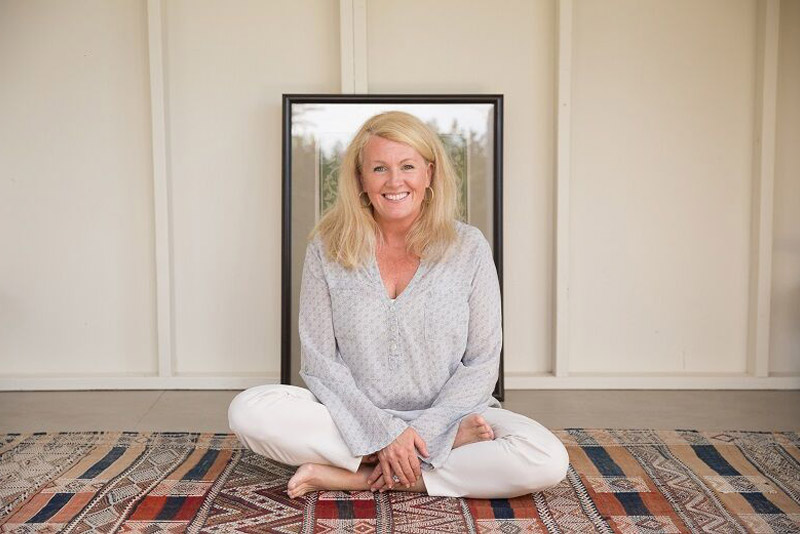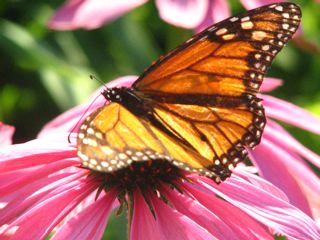Moment by Moment: The Practice of Mindfulness

Moment by Moment: The Practice of Mindfulness
What are you doing right now? I imagine you are sitting down somewhere, reading this. But what else are you doing? Eating? Listening to music? Hanging out with your family? Planning the rest of your day? Spacing out? Are you only somewhat “here”?
What if you paid full attention to what you are actually doing while you are doing it? What if you unitasked instead of multitasked, doing only one thing at a time? You can with a practice called mindfulness.
Mindfulness refers to two things: it is a way of life and it is a formal type of meditation practice.
Mindfulness means paying attention to what you are doing while you are doing it, refraining from judging or evaluation. With mindfulness you are fully engaged with your life, rather than disengaged and distracted.
Though being mindful does take resolve and practice, it beats living your life on autopilot which makes life dull. You can build your mindfulness muscle by activating the direct experience network of your brain – the network which allows you to be truly engaged.
When you live mindfully, you are more present for the moment at hand whether it is paying attention fully to a person you are engaged in conversation with, or experiencing a moment of awe, or noticing an emotion that arises, or a physical sensation, or being present for a chance meeting, or making a choice in alignment with your values, or experiencing an a-ha moment. Living mindfully makes life more juicy, more magical, and more abundant.
You can practice mindfulness right now (read these instructions first, then close your eyes and experience the practice for 10 minutes or more.)
- Bring your attention to physical sensations you notice as you sit.
- Notice the feeling of being supported by your chair.
- Notice the sensations present in your rear and legs.
- Feel the sensations of your feet and toes and as they rest on the floor. Feel the support.
- Now, bring your attention to the sounds in your environment.
- Notice sounds near and far. Refrain from judging them as pleasant or unpleasant.
- Notice how some sounds arise from the silence and dissipate. Notice how some seem to be constant.
- Tune in to the texture of the sounds – the sound of the sounds – without any need of determining the source of the sound.
- During this practice, be kind to yourself as you notice your mind wandering, recognizing that the nature of the mind is to wander.
- Easily bring your attention back to the sounds.
- Now, tune in again to the sensations in your body.
- Invite relaxation as you notice particular areas calling your attention.
- Refrain from judging sensations as good, bad, comfortable, uncomfortable. Instead, simply notice: whether it be an area of warmth, coolness, movement, stillness, the air on your skin, dampness, dryness, etc.
- Now, bring your gentle attention to your natural breathing.
- Notice the breath’s movement in and out of the body. Notice the stillness in between breaths.
- Sense the temperature change of the breath as you naturally exhale and inhale.
- When you get distracted, bring your attention to what you are experiencing right now. Sound, body, breath.
- This moment, this moment. Aim to be fully present as you simply listen, feel, and breathe.
- Let go of the need to evaluate, judge, or set preferences.
- This is the simple practice of mindfulness.
Let your mind be full with what you are doing as you do it, all day long. This takes practice.
Mindfulness is attentional training, as it helps you to be more engaged in this moment and this place. Mindfulness is a deliberate way of paying attention on purpose. The quality of your attention ideally will be a gentle, non-judgmental attention, as you engage with what you are doing as you are doing it. It’s a simple practice of anchoring your attention from thoughts of the past or the future or distractions of any kind, into the present moment. Mindfulness doesn’t include forgetting about the past or ignoring the future, it’s more about bringing a balance into what you pay attention to, allotting the majority of your attention to the present moment, to the life you are living in this moment, right now.
Your life is happening now. Here and now. You’re not breathing in the past or the future, you’re breathing now. You don’t feel sensations in your body in the past or future, you feel them now. Emotions too. And any spiritual connection is experienced in the present moment. The future and the past, they don’t really exist except in your mind. Mindfulness is recognizing that.
Mindfulness can be practiced formally as a meditation, and can also be practiced while you are engaged in activity, at any time in almost any situation. You can be mindful of the sensations in your feet while walking, or the feeling of warm soapy water on your hands while doing dishes, or being mindful of the sensations of breathing. To be mindful you simply notice all sensations – and when the mind’s usual judgments and continual commentary arises and takes over the experience, return your attention to what you are actually experiencing, rather than your thoughts about it. Mindfulness trains your mind to stay right here, and focus on the present moment.
This moment is the only real thing. Tomorrow, at this point, is an idea.
Have you ever sat down to lunch only to talk about what will be happening for dinner? Or, have you ever sat down to eat a meal and suddenly looked down and your food was gone, but you didn’t remember eating the whole thing? That is mindlessness. Mindfulness is the opposite of mindlessness.
When you eat without awareness, you may, in theory, know you are eating, but your mind might be somewhere else. You might be thinking about other things, or watching TV, talking, or reading – or all of those. So a very small part of your awareness is absorbed with eating. Perhaps you are only barely aware of the physical sensations and tastes, and even less aware of your thoughts and emotions. You can even miss the whole experience. And the same can be true for any activity you are engaged in. Tomorrow will arrive and be experienced in the here and now. When? Now. Where? Here.
Let’s look at the practice of eating mindfully.
You can practice eating mindfully at your next meal. Or, as you snack on a peach, a piece of chocolate, or even a raisin. Kids love to do this too! Eating can be a magical, alchemical experience as your body turns the world “out there” into your skin, bones, organs, and the tissues of your body.
First, turn off your phone, music, and television. Don’t read while eating mindfully, either.
- Explore this moment of communion as you eat.
- When you are ready to practice, sit down comfortably with the food in front of you on a plate or napkin.
- Deliberately notice the way your body is positioned, the sensations in your body, and the mind and body’s responses to those sensations.
- Relax your body and breathe normally, don’t hold your breath.
- Behold the food you will eat.
- It seems we eat with our eyes first. Look at the food, notice the texture, the shadow, the light, the shape, the reflection of light, its colors.
- Resist the urge to label anything, simply pay attention to what you sense on rather than your ideas or judgments about it.
- Pick it up and hold it in your hand, notice its temperature, texture, and weight.
- Before you take your first bite and notice all the sensations in your body.
- As you mindfully bring the food up toward your mouth, notice the aroma. What do you smell? Notice what happens in your mouth. Does it have an effect on your taste buds? Your saliva?
- When you feel ready, take a small bite of food. Chew, but resist the urge to swallow right away.
- Really taste the food. Experience the tastes rather than label them.
- Hear the food as you chew. Notice the texture in your mouth.
- If your mind wanders, purposefully and gently bring your attention back to the mindful eating practice. Do not judge yourself.
- Continue eating in this way until you are finished, be fully engaged in eating while you eat.
- When you are through, sit quietly for a few minutes. Notice how you feel. Are you satisfied?
- What if you ate one bite of your meal like this, every meal? (Studies show that people tend to eat more when they are given larger portions and are distracted.)
Why would someone want to practice mindfulness?
- You become more self-aware
- You trust yourself more and accept yourself more
- Your appreciation of life is enhanced
- You are able to be more serene in the face of difficulties
- Your stress decreases along with a variety of stress-related physical symptoms, including chronic pain
- There are significant decreases in anxiety and depression
- Your clarity, concentration, and creativity improve
- Your immune system functioning is enhanced
- You are more accepting attitude toward life and its challenges
Now who wouldn’t want that?
Be guided into mindful eating and 20 other meditation and meditative practices in Sarah’s best selling book: Soul-Centered: Transform Your Life in 8 Weeks with Meditation.
Sarah McLean
Sarah McLean is an acclaimed teacher and thought leader who is determined to create more peace on this planet by helping people wake up to the wonder and beauty of their lives and the world around them through the practices of meditation and mindfulness. She inspires audiences everywhere blending the spirit of Zen wisdom with Vedic knowledge and self-inquiry. She helps demystify meditation and makes it accessible to anyone. It was over 30 years ago when she began her daily meditation practice, and moved in to a Transcendental Meditation community. There, she received advanced training in meditation and studied Ayurveda. Since 1993, when she became the education director for Deepak Chopra’s Center for Mind Body Health, she's been teaching contemplative practices and mind/body health. In 1997, she went to India to live in a traditional ashram in India, When she returned to the States, spent two years as a resident trainee in a Zen Buddhist monastery. She fell in love with Self-inquiry and served as the director of Byron Katie's School for the Work. In 2012, she founded the McLean Meditation Institute, home of the Meditation Teacher Academy which certifies meditation and mindfulness teachers through its 300-hour teacher training program. Her bestseller, Soul-Centered: Transform Your Life in 8 Weeks with Meditation, and her most recent book, The Power of Attention: Awakening to Love have received rave reviews. She now lives in Santa Barbara, California where she trains meditation teachers and offers online classes and lives a life she loves.






